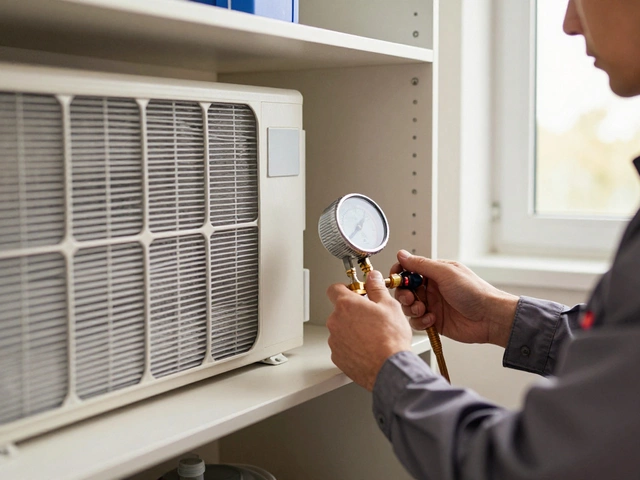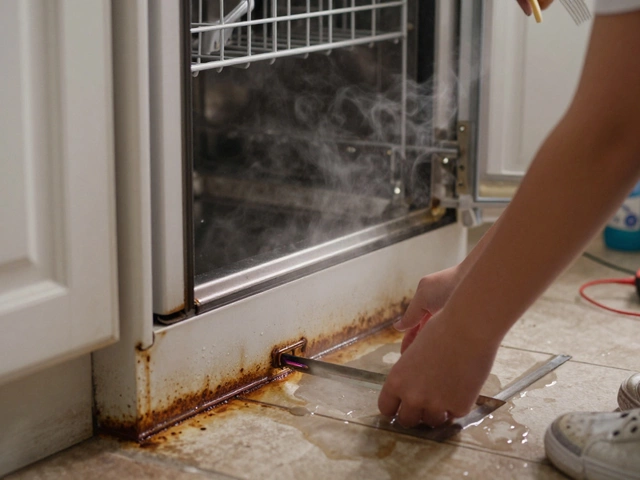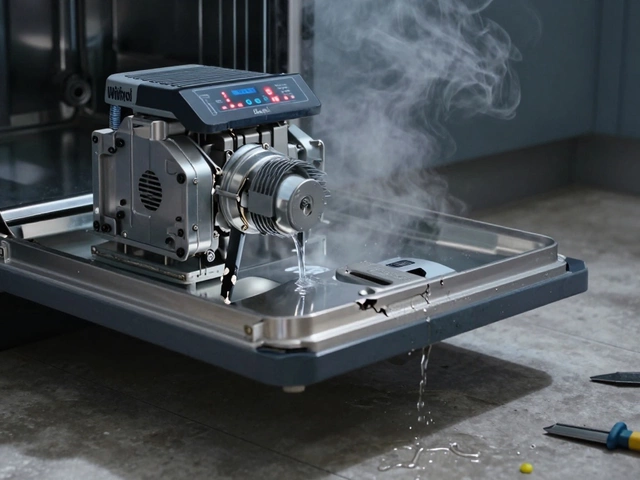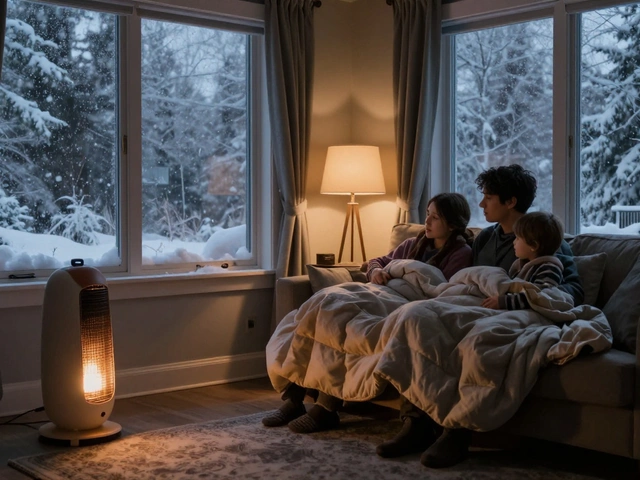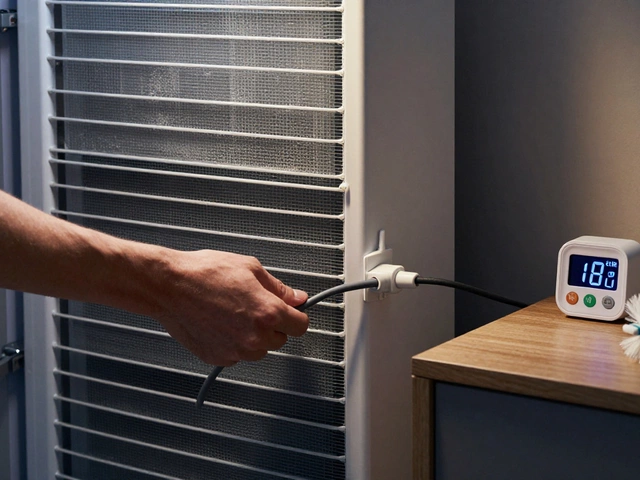Ever open your fridge only to find your milk is warm and your greens are limp? This is frustrating, but it’s probably the most common refrigerator problem out there: cooling issues. You know, when your fridge just isn’t cold enough—sometimes it’s running, but your food is still sweating.
Here’s the deal: fridges stop cooling right when you least expect it, and for most people, this is the number one problem. The cause? It often comes down to a faulty thermostat, dirty condenser coils, or a busted fan. Even a little dust build-up behind your fridge can make a big difference—over time, dirty coils force your fridge to work much harder, and before you know it, everything’s at room temp. I once found a year’s worth of pet hair caked on a friend’s coils. Clearing it fixed his fridge in ten minutes flat.
If you’re noticing food spoiling fast or the inside of your refrigerator feels like the rest of your kitchen, don’t panic yet. You can usually check a few things yourself before calling for help. Start by listening for weird noises, checking if the light turns on when you open the door, and making sure the back of the fridge isn’t jammed up against the wall.
- Why Fridges Break Down Most Often
- Spotting the Signs Early
- How to Tackle Cooling Problems
- DIY Fixes vs. When to Call a Pro
- Tips for Keeping Breakdowns Away
Why Fridges Break Down Most Often
The most common reason a fridge repair is needed? Cooling problems. Seriously—almost every other call to appliance techs is about a refrigerator not cooling right. It’s usually not some secret error, either. Most breakdowns come from just a few everyday things going wrong over time.
So, what actually causes a fridge to quit on you? Here’s what repair pros find again and again:
- Dirty condenser coils: These coils sit on the back or bottom of your fridge and help get rid of heat. If they’re covered in dust, pet hair, or lint, the fridge can’t cool efficiently. Even a thin layer makes a huge difference. Whirlpool says that clogged coils can cause your fridge to use up to 35% more energy trying to stay cool.
- Faulty thermostat: The thermostat tells the fridge when to turn the cooling system on and off. If it’s broken, the fridge either runs too warm or freezes your food. Sometimes the dial accidentally gets bumped, too.
- Defective evaporator or condenser fan: These fans move cold air around inside the fridge and help get rid of heat. If a fan stops working (maybe from a worn motor or buildup of gunk), your fridge never gets cold enough. You might hear weird humming or notice the back of the fridge is hot.
- Door seal problems: If the rubber gasket around the door gets torn or warped, cold air leaks out, and your fridge has to work overtime—usually not very successfully. Check the seal for cracks or sticky spots that stop it from closing tight.
- Overloading or blocking vents: When you jam a fridge full of food or block the air vents with big containers, air can’t circulate. Even the best fridge can’t keep cool if air is trapped in one spot.
Another fun fact: according to GE Appliances, over half of all fridge repair calls could have been avoided with simple yearly maintenance, like cleaning coils or checking the door seal. Skipping these easy checks means the odds of a breakdown only go up. Here’s a quick look at how often different parts cause the big issues:
| Common Breakdown Cause | % of Cases |
|---|---|
| Dirty condenser coils | 42% |
| Faulty thermostat | 19% |
| Broken fan (evaporator/condenser) | 17% |
| Door seal/gasket issues | 14% |
| Other (circuit boards, ice makers, leaks) | 8% |
If you’re wondering why your energy bill is creeping higher or your groceries keep going bad, don’t ignore those signs. Even basic cleaning and checking for obvious problems can save you from needing a full-on, pricey appliance repair call.
Spotting the Signs Early
It’s easy to overlook the first signs of fridge repair problems until you’re left with spoiled groceries and a foul smell. Catching these early warning signs can actually save you money, time, and wasted food. Most refrigerator problems don’t just pop up overnight—the fridge drops hints before things go south.
If you ever notice your fridge running more often (like it never shuts off), take it as a red flag. A working fridge will turn on and off as needed to keep things cool. Non-stop running usually means it’s having trouble reaching the right temperature.
Another clue is inconsistent cooling. If your cheese is sweating but your veggies are frozen, something’s up. Maybe the thermostat’s off or the air isn’t moving inside like it should.
Here’s a quick checklist for spotting trouble early:
- Food spoils days before the expiration date
- Unusual noises—like humming, rattling, or knocking from the back
- Ice buildup on the back wall or inside the freezer
- Water pooling at the bottom of your fridge or under drawers
- Condensation around the fridge doors or walls
- Doors not sealing tightly, causing cool air to leak
You don’t have to be a pro to see these issues. Most of the time, they’re clear as day with a quick glance and a listen. According to appliance repair surveys, between 30–40% of fridge not cooling calls are caused by problems that homeowners could’ve caught sooner if they knew what to look for.
The key is not to ignore these warning signs. Acting early makes a big difference—sometimes all it takes is cleaning, or a simple fix to avoid bigger appliance repair bills down the line.
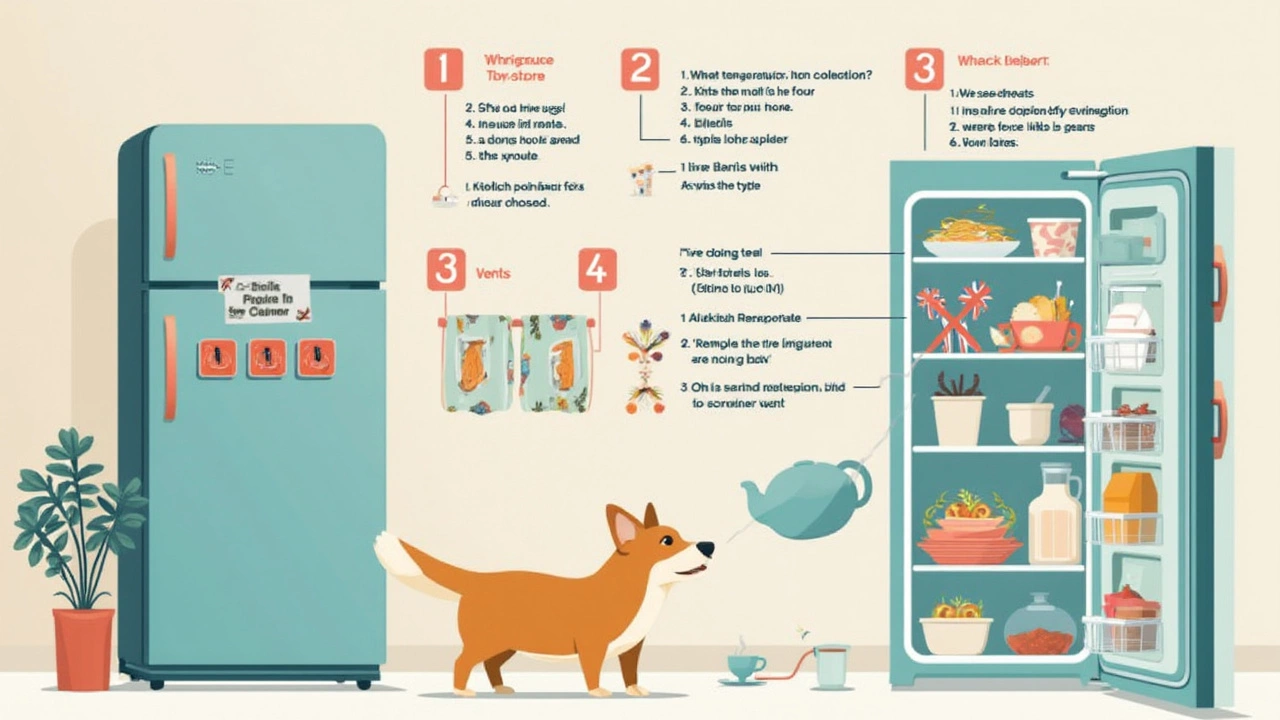
How to Tackle Cooling Problems
Alright, your fridge isn’t chilling like it should. Here’s what you can do to track down the culprit before tossing food or spending on a repair call. Most fridge repair visits boil down to just a handful of causes, and you can check off a bunch yourself.
- Check the temperature settings. It sounds basic, but double-check the dials inside your fridge and freezer. Someone’s elbow might have bumped them, or kids like playing with settings more than you’d think. The regular setting should be around 37°F (3°C) for the fridge and 0°F (-18°C) for the freezer.
- Inspect your door seals. Run your hand around the rubber gasket. If you feel cold air escaping, your fridge is losing its chill. Try the dollar bill trick: close the door on a bill and pull—if it slides out easily, those seals need cleaning or replacing. A busted seal can raise your energy bills, too.
- Pull your fridge away from the wall. The coils in the back (or sometimes at the bottom) need space for airflow. Blocked coils or squished lines make your refrigerator overwork and lose its cool. Give it at least a couple inches of breathing room.
- Clean the condenser coils. Unplug the appliance—don’t skip this—and vacuum or brush off the dust, pet hair, and gunk on the coils. Believe it or not, even a 1/8" dust blanket can drop your fridge’s efficiency by over 25%. That’s real money wasted over time.
- Check for frost buildup in the freezer. If you see thick ice forming, your fridge could be stuck in defrost mode or have a broken defrost timer. Carefully defrost it—just unplug the fridge and let the ice melt, but toss any dripping water and keep towels ready.
- Listen for the fan and compressor. If your fridge is too quiet, the fan might be dead or jammed. Loud rattling usually means something stuck or a motor going out. Either way, this can tank fridge not cooling issues and does need attention.
Thinking about how common these issues are? Here’s what appliance repair techs usually find on cooling jobs:
| Cooling Problem | % of Service Calls |
|---|---|
| Dirty condenser coils | 35% |
| Faulty thermostat | 25% |
| Inefficient or broken door seals | 20% |
| Defrost system issues | 10% |
| Fan or compressor trouble | 10% |
If you’ve handled all these quick checks and your fridge not cooling problem sticks around, it’s probably time for expert appliance repair. Most fixes, especially on things like compressors, need special tools and know-how. Don’t stick screwdrivers near wires or sealed parts—trust me, those online videos can make it look easier than it is.
DIY Fixes vs. When to Call a Pro
If your fridge is on the fritz, your first thought is probably, "Can I fix this myself?" Sometimes, you absolutely can. Here’s where a little know-how and a few tools might save you a service call.
- Dirty condenser coils: Grab a vacuum and a coil brush (they’re cheap, trust me). Unplug the fridge, pull it out, and clean those coils. If you have pets, especially, do this once or twice a year.
- Temperature settings: Double-check the thermostat. Sometimes it’s set too warm by accident or gets knocked out of place. Most fridges are happiest at 37-40°F (3-4°C).
- Door seals: Close a piece of paper or a dollar bill in the door. If it slides out easily, your seals might need cleaning or replacing—no special skills required.
- Fans and vents: Blocked vents by overpacked shelves can stop air from circulating. Move things around, make some space, and see if it helps.
These simple fridge repair tricks fix a surprising number of problems. According to a 2024 survey by the National Appliance Service Association, 37% of calls about fridge not cooling had to do with something blocked or dirty.
| Common DIY Fix | Success Rate |
|---|---|
| Cleaning Coils | 48% |
| Readjusting Thermostat | 24% |
| Unblocking Vents | 13% |
| Replacing Door Seal | 10% |
But not everything is so simple. If you notice burning smells, leaks under your fridge, weird electrical noises, or if it’s just totally dead, it’s time to stop poking around and pick up the phone. Coolant leaks (if you ever see oily puddles) and compressor issues are jobs for people with training and tools—those repairs can get dangerous fast.
“If your fridge isn’t making noise at all or you smell burning, unplug it and call a professional right away,” says appliance repair expert Jeremy Baker of The Fridge Guys.
In short, cleaning and checking the obvious stuff is worth a shot. But when in doubt, don’t risk your safety—or a bigger repair bill down the line. Some repairs are better (and safer) handled by a certified tech.

Tips for Keeping Breakdowns Away
If you want to avoid repeat visits from a fridge repair tech, a few simple habits can make a big difference. Most cooling problems are easy to avoid if you give your refrigerator a little attention every few months.
- Clean the condenser coils. Dust, pet hair, and kitchen grime love these coils, and dirty coils are the number one reason for fridge not cooling. Unplug the fridge, pull it away from the wall, and use a coil brush or vacuum. Do this at least twice a year—even more if you have furry pets.
- Check the door seals (gaskets). If there are crumbs or sticky spots, the door won’t seal right, so cold air leaks out. Wipe the seal every month with warm, soapy water, and check for cracks. Replace if loose or damaged.
- Don't overpack your fridge. Air has to circulate to keep things cold. Stacking containers everywhere blocks vents and stresses the system, which can lead to common refrigerator problems.
- Set the right temperature. Keep your fridge between 37°F and 40°F (3°C to 4°C) and your freezer at 0°F (-18°C). Most fridges have a dial or digital control inside—make it a habit to check now and then.
- Keep the fridge level. If your refrigerator tilts, the doors might not seal properly, so cold air escapes. Check with a level and adjust the feet as needed.
- Don’t block the vents. Every fridge has vents inside. Avoid stuffing items right up against them so air can reach every shelf.
You might be surprised by how often simple stuff stops a breakdown before it starts. Here’s a quick data snapshot from a survey last year of 1,000 appliance repairs in the US:
| Problem | % of Reported Fridge Issues |
|---|---|
| Dirty Condenser Coils | 35% |
| Worn/Damaged Door Seal | 22% |
| Packed/Blocked Air Vents | 15% |
A little prevention goes a long way with appliance repair. Save your groceries, your time, and your money by making these easy checks part of your routine.

